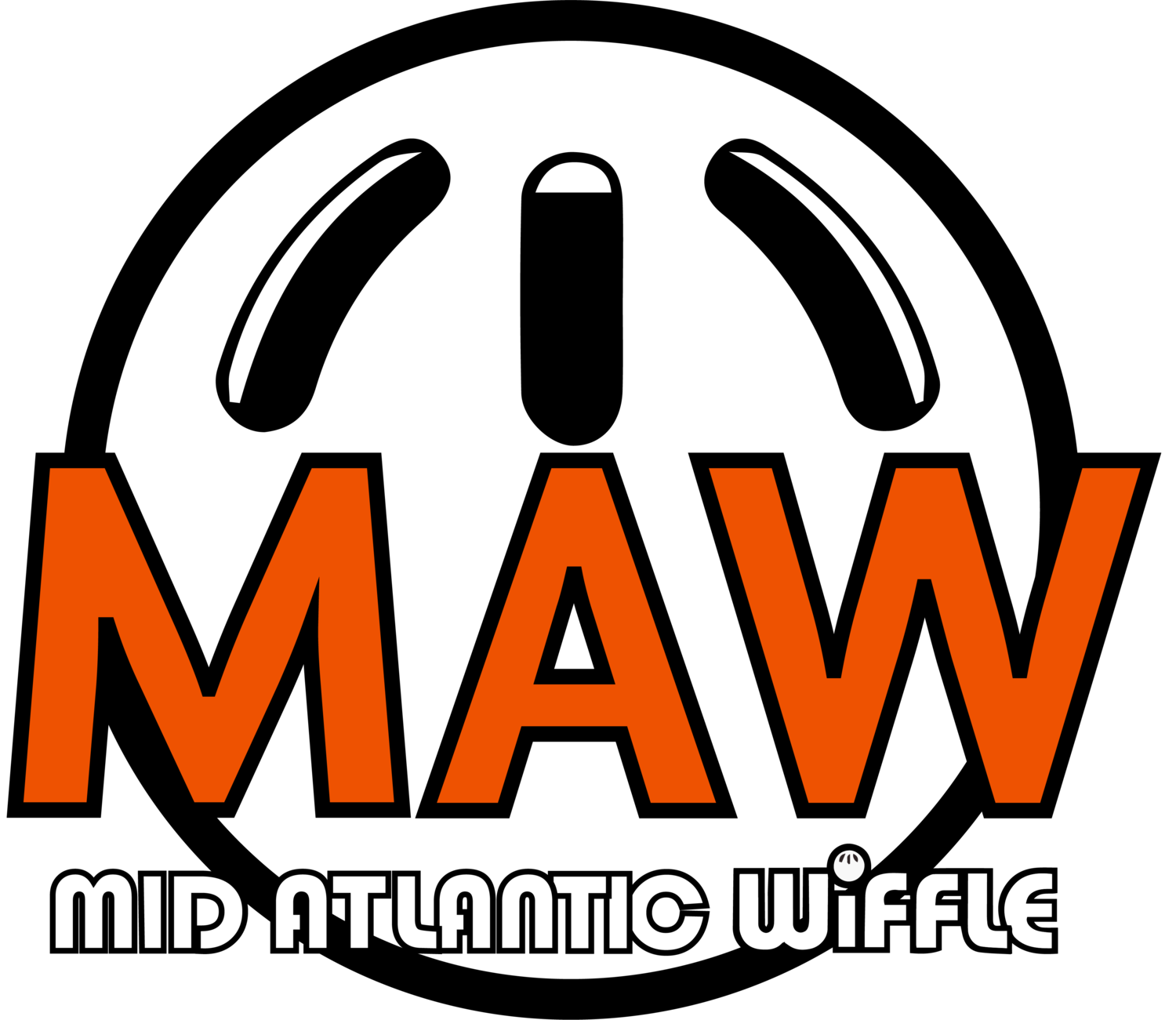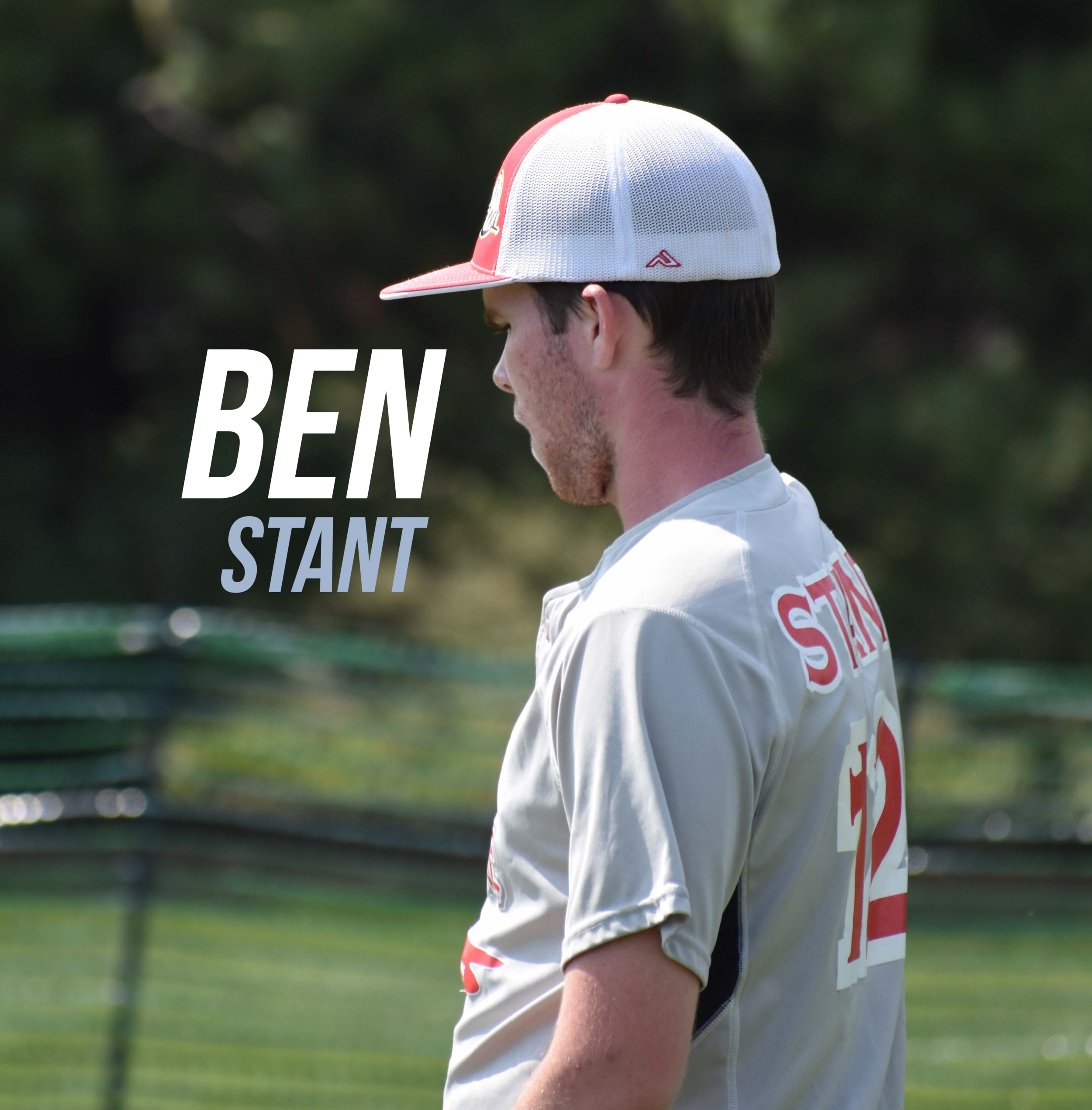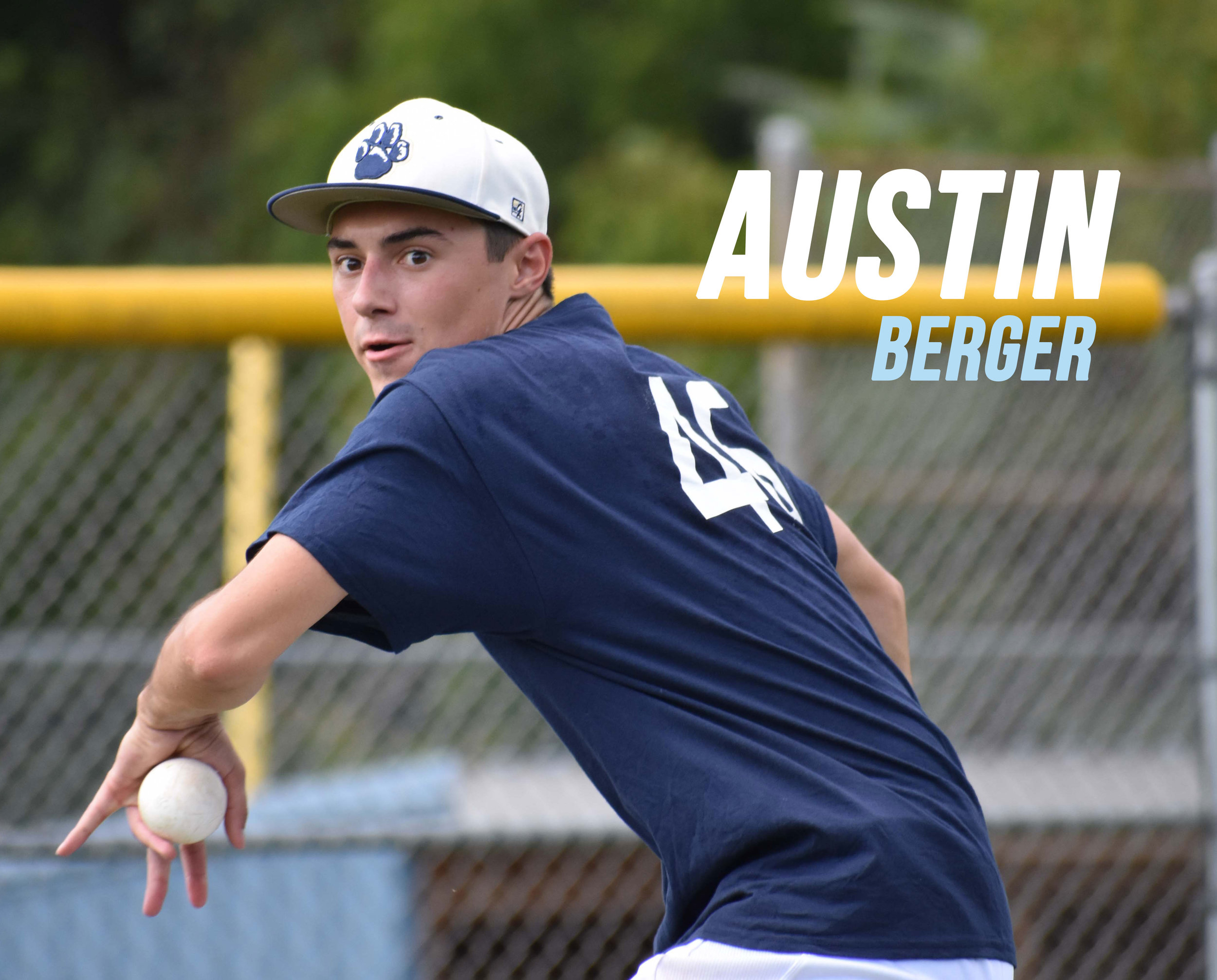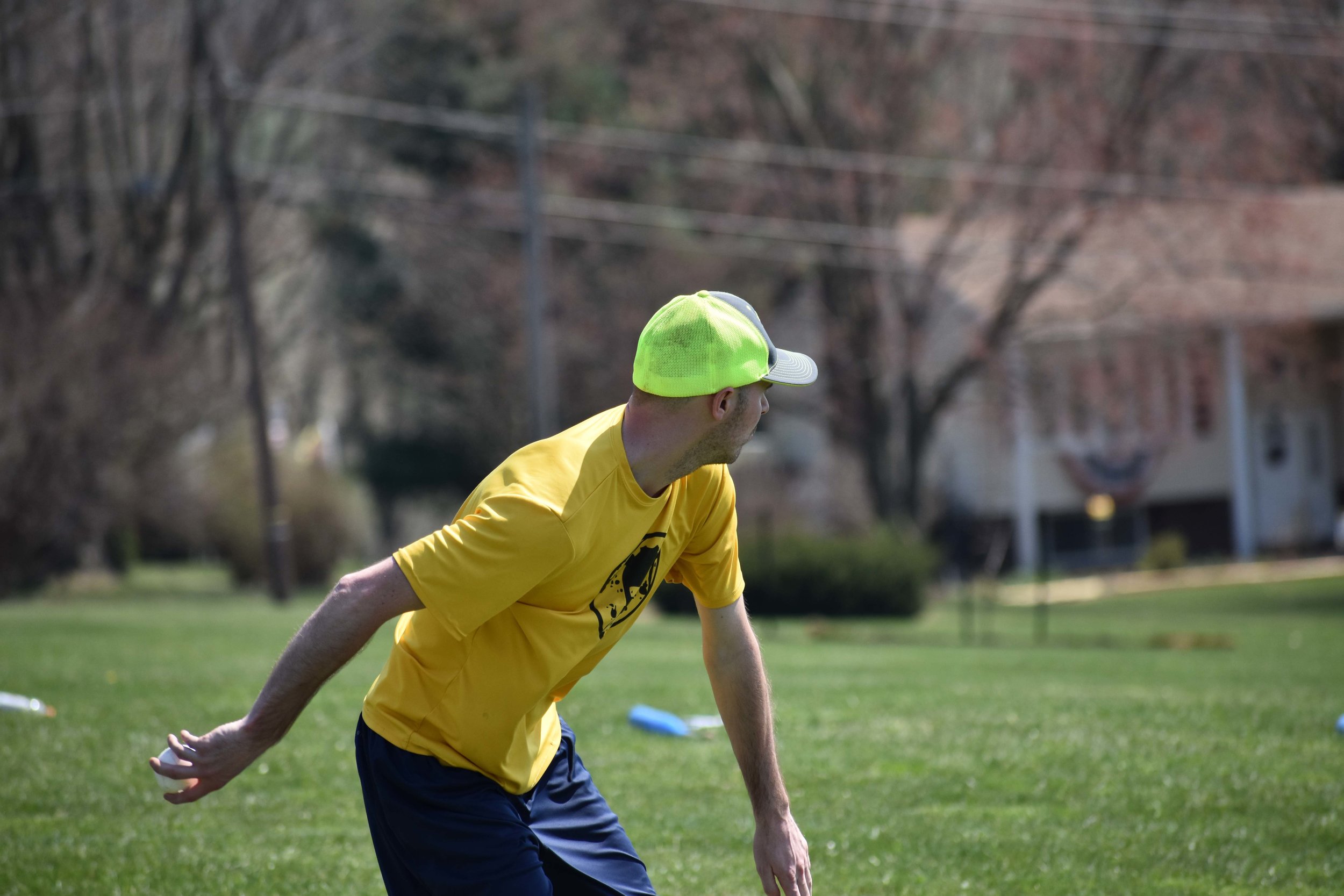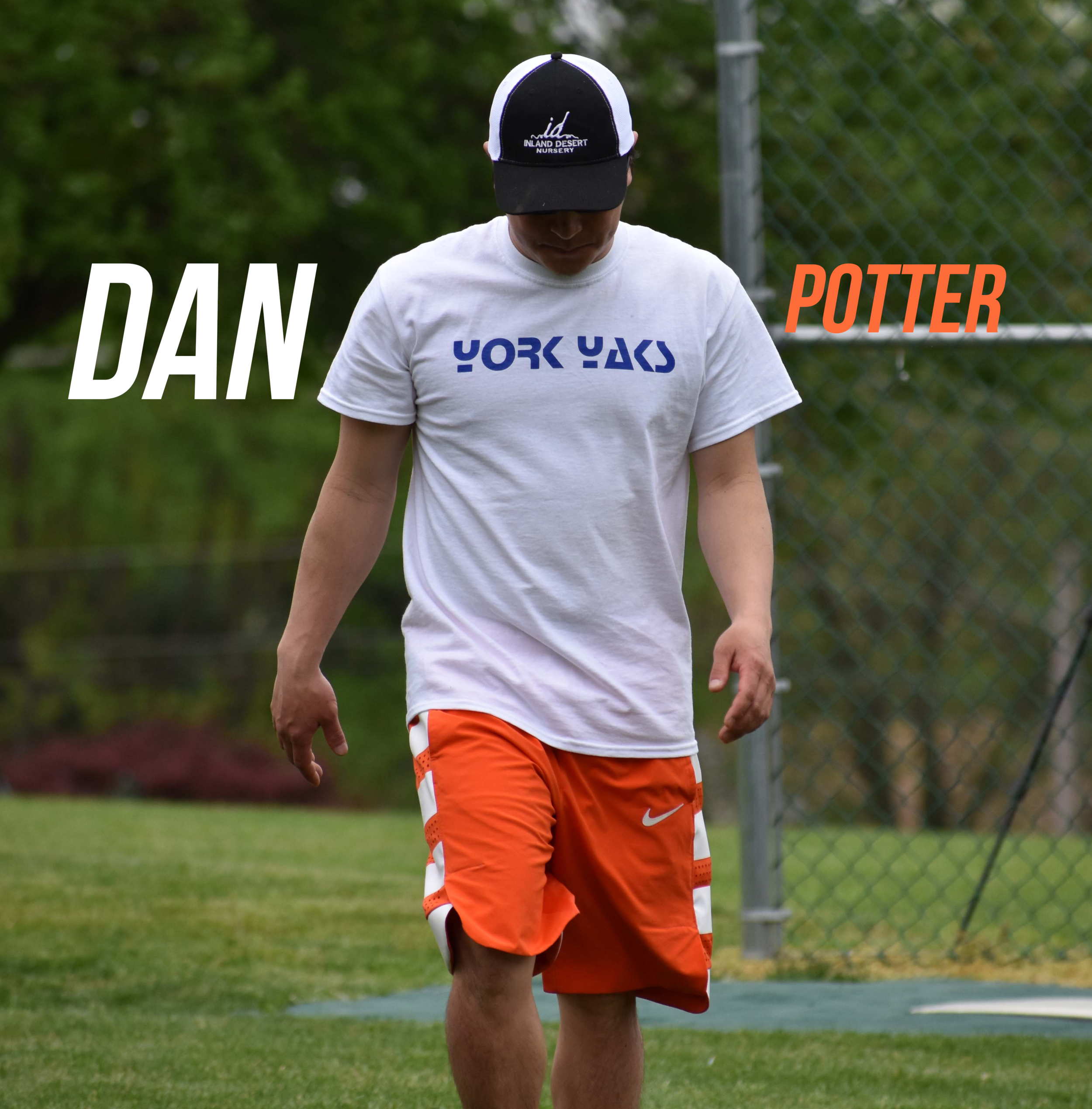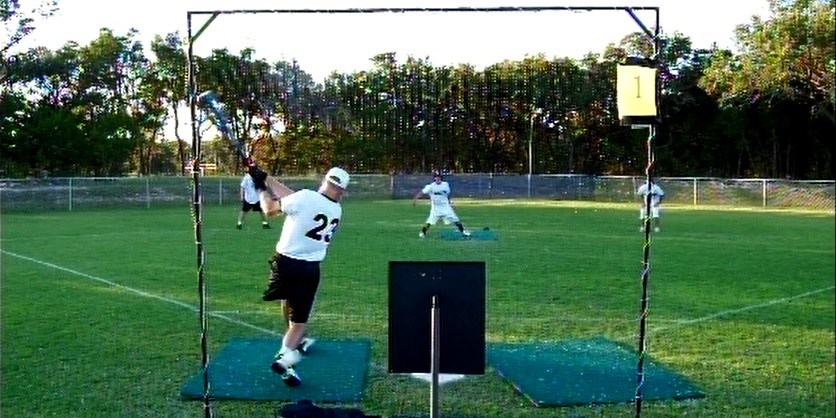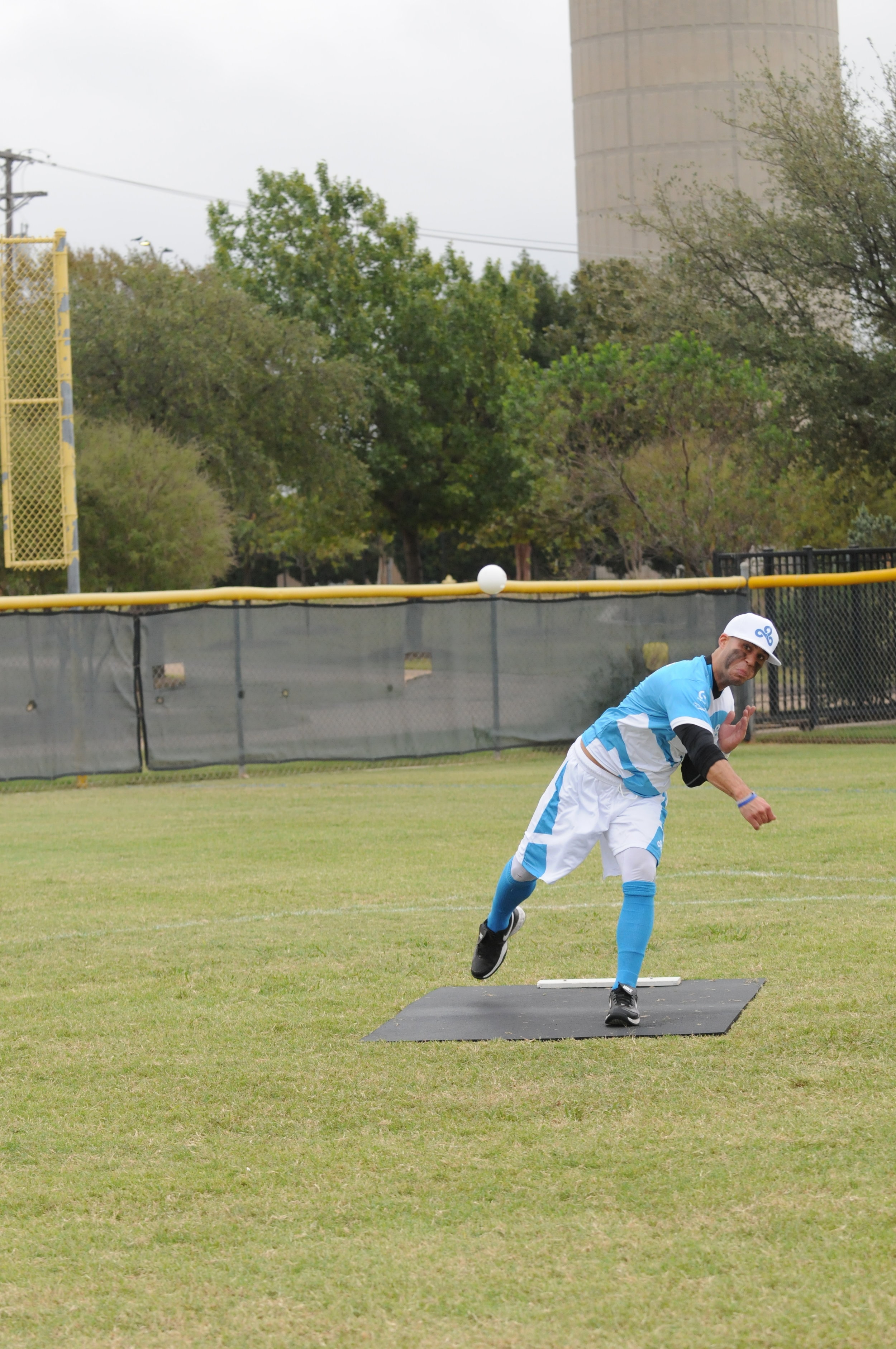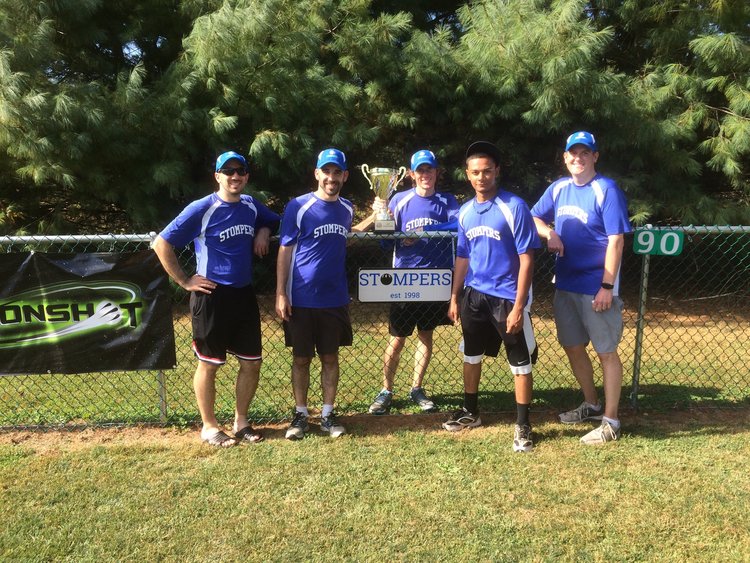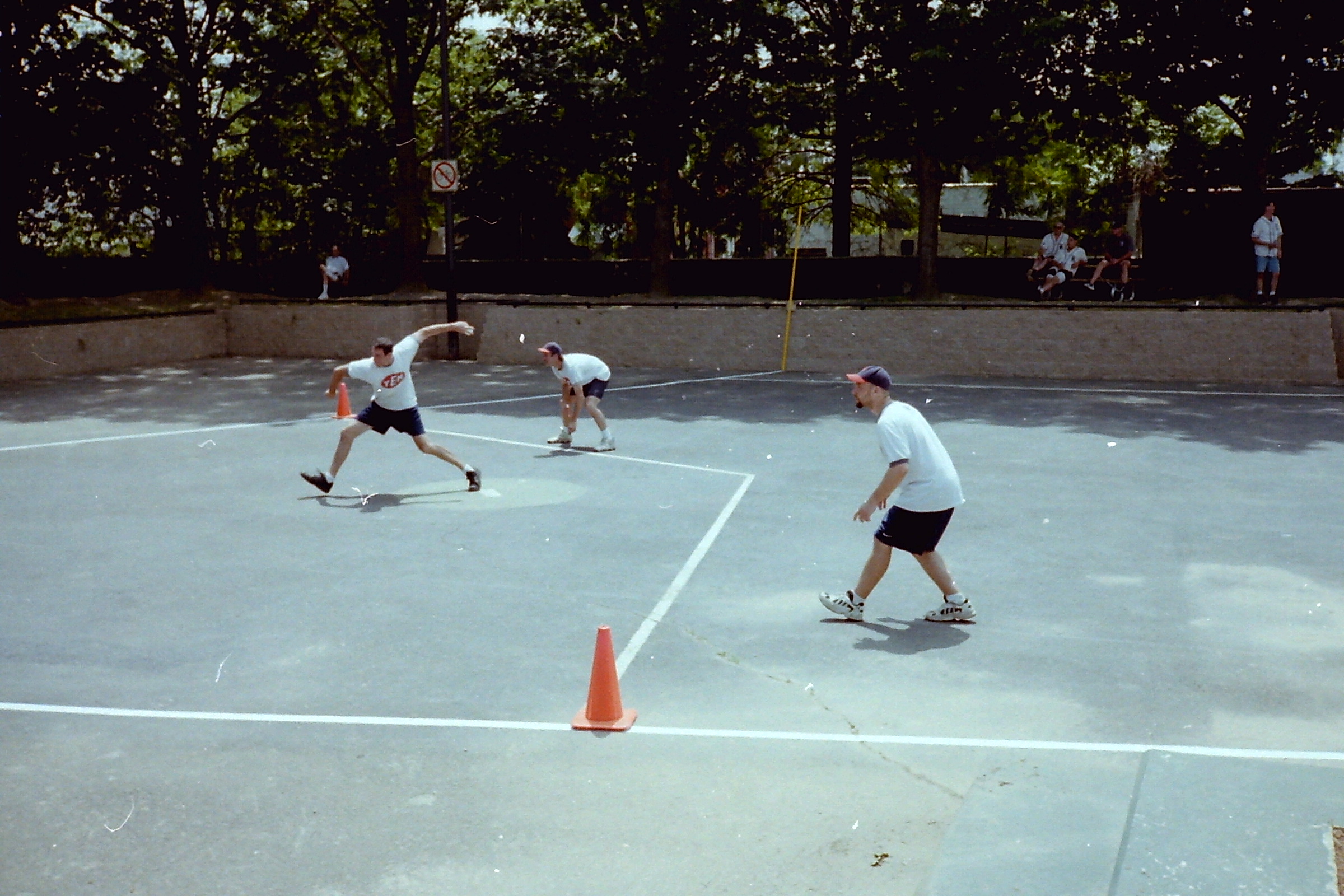By: Paul Cooke
Later this year, The Drop will award the Player of the Year award to the player – among ten finalists – that the editor determines was the best all around wiffler in unrestricted pitch speed competition for the 2018 season. Plans are also in the works for a comprehensive “Top 100” list to be released towards the end of the calendar year.
In July, we highlighted the stories of twenty players who for one reason or another stood out for their performances during the first six months of the calendar year. This time we look at the stories of fifteen additional players who caught out attention during the third quarter of 2018. As a reminder, the award, list, and this article only looks at performances in unrestricted pitch speed environments.
Did any other hitter do more in fewer games this summer than Ben Stant? In ten spring & summer games between Mid Atlantic and Palisades Ben collected 29 hits, 12 walks, and 8 home runs while striking out only 15 times in 68 trips to the plate. Lest you think he was feasting on subpar competition, Stant did his damage against an array of quality arms: Jarod Bull, Jimmy Cole, Matt & David Herbek (Naturals), Tim McElrath, Adam Milsted, Chris Owen, Johnny Costa, and Jordan Robles. On a per plate appearance basis, Stant very well might have had the best year of any hitter in the sport. Unfortunately, the sample of games is a little too small for Stant to place highly on year-end lists – as his placement in the Mid Atlantic Hitter of the Year category demonstrated – but its an impressive output nonetheless. Stant’s season appears to be done, but everyone – well, expect for opposing pitchers – hope to see him and his bat on the field more frequently in 2019.
One of the coolest things about any Wiffle Ball summer is seeing players from the past that faded from the scene suddenly pop up in unexpected places. Dereck Anderson was the heart and soul of the Los Angeles-based Gunners – who finished runner up to In the Box in the 2005 Fast Plastic NCT – in the early to mid 2000’s and won a GSWL Fast Pitch title in 2010. Dereck faded from the public eye shortly thereafter but re-emerged mid-2018 in the Washington based JAL. Anderson is having a fine JAL XVIII season at the plate, with more than double the number of walks (64) than strikeouts (31) to go with three doubles and three home runs. On the other side of the ball, Anderson has been a solid number two pitcher for the first place Castle Rock Rapids, forming a top notch 1-2 combo with Rapids’ ace Jeter Larson.
I had the opportunity to chat with many players this summer who participated in the NWLA Tournament. When I asked these individuals to name the players from the tournament that impressed them the most, almost to a man the name Gus Skibee came up. The St. Louis based player finished top three in batting average, on base percentage, slugging percentage, home runs, and totals bases at the yellow bat, fast pitch tournament. Skibee did at least some of his damage against known commodities including Austin Berger (WILL), Anthony LaValley (AWAA), and K-Von (AWAA). Gus was solid on the carpet as well, throwing six shutout innings for his Cardinals team. Skibee’s 2018 unrestricted pitch speed resume is diminished by it’s relative brevity, but you’ll be hard pressed to find someone who saw him play in Morenci that was impressed with his bat. Certainly, participating in a major fast pitch tournament or league outside of the NWLA tournament would go a long way to assessing just how good of a hitter this NWLA Tournament standout is but there is little doubt that he has the tools.
Only two pitchers so far this year have managed to hold the dangerous McElrath brothers hittless over a full 5+ inning game. One is the Palisades’ Dodgers Tim Trenary. The other? The Jersey Lemon Heads’ Ray Lutick. And oh yea, if that weren’t enough Ray also has head-to-head victories over Jordan Robles, Conor Young, and Chris Sarnowksi this year. The Lemon Heads were one of the busiest and winningest teams during the back-half of the summer with Ray leading the charge. During four MAW tournaments this summer – including September’s Mid Atlantic Championship Tournament – Ray ran over opposing batters to the tune of 267 strikeouts and 18 ER in a whopping 104 innings pitched. The Lemon Heads’ workhorse pitched nearly every game for his team, using a power drop pitch - reminiscent of Dan Cryan - to befuddle hitters. In addition, Ray went 5-1 for the Lemon Heads at the tournament formally known as National Wiffle. On September 8th at the Mid Atlantic Championship Tournament, Ray had a tournament for the ages as he pitched at least a part of all nine of his team’s games on the way to a second-place finish and tournament MVP honors.
Speaking of the Lemon Heads, Ray’s teammate Dave Clark is another player to keep an eye on in 2019. Clark’s numbers in MAW – both on the regular season and in the Mid Atlantic Championship Tournament – don’t jump off the page by any means, but he has all the makings of a top flight Wiffle Ball hitter. Until running into Robles – who he did hit up for a triple and a single – Clark had a heck of a Championship Tournament, including eight hits in twenty at bats against Young and Blake Hoffman. Clark is a line drive hitter and tends to keep the ball in the middle of the field – which limited his home run totals – but he is nonetheless a major threat at the plate with a great swing and effortless power. Now that he has a full season under his belt, 2019 could be a breakout year for Clark. Keep him on your radar.
Ryan Bush has been on the radars of most serious players for years now but his performance during the second half of the 2018 calendar year is going a long way towards reaffirming his spot as a top tier pitcher. It began for Ryan at the NWLA Tournament in July when he threw 14 shutout innings over the course of three games for OCWA. His underlying numbers were just as good. The tall righty allowed a measly three hits and nine walks while striking out 36 batters throughout the course of the two-day tournament. After disappearing for a year from Palisades following a great rookie campaign and tremendous 2016 post-season, Ryan re-emerged this year throwing 20 innings of two-run ball for the pennant-winning Giants. Although he has been far less impressive at the plate this season, Bush has already proven this year that he can shut down hitters no matter what the environment. A good showing at the Fast Plastic Texas Open would only add to his impressive and diversified pitching resume.
It was a bizarre summer for the Ridley Park Red Sox. The team began the 2018 RPWL season 0-6 and needed a 6-2 run to sneak into the playoffs. Lefty Tyler Nachbar had an inconsistent season on the rubber but pitched three shutouts down the stretch to get his team into the postseason. A power threat every time he steps to the plate, Nachbar sent seven of his eleven hits during the RPWL regular season out of the park for home runs. In the playoffs, Nachar’s pitching woes continued and he eventually came down with a sore shoulder following an impressive pitching performance – 11 innings of one run ball – at MAW’s August 4th tournament. With nowhere else to turn, Nachbar handed the ball to his team’s number two pitcher – Cam Farro – who only had 8 2/3’s innings of pitching work to his name during the regular season. That lack of experience mattered little to the high school senior. Farro took the ball for his team’s next five games and threw 27 innings of 2-run ball on the way to clinching the title for the Red Sox. Farro is still a raw flame thrower but was picking up new pitches as the playoffs rolled along. With plus velocity already, he is another pitch or two away from joining what seems to be an endless supply of quality pitchers to come out of the Ridley Park Wiffleball League.
Correction 9.19.18 7:00 PM:
The minor league arm of Palisades WBL is only three seasons old, but it may have already found its poster boy in Vinny Lea. Lea had a cup of coffee in Palisades proper back in 2015, was missing in action in 2016, and returned in 2017 on the minor league Dragons. Lea had a tremendous season for the Dragons last year on both sides of the ball. He picked up hits in almost half of his plate appearances and worked 33 innings on the carpet while allowing just 11 runs. Despite his minor league success, Lea made it to just one Major League in game ’17 for the Mariners. This year, however, Vinny was not to be denied. In 25 1/3 innings with the Dragons this season, Lea did not allow a single run. He carried that success over to the majors for the first time, pitching to a 0.71 ERA in 60+ regular season innings to lead an underdog Royals squad into the post season.
Two veteran players made good in Tennessee the weekend of July 22nd at the aforementioned National Wiffle tournament. David “Toast” Wood – back in action for the first time since last year’s Fast Plastic Texas Open – pitched both the semi-finals and finals for the all-star Golden Sticks squad, defeating both the Mothmen and Chicken ‘n Wiffles (a team name of the year contender) to capture the championship. Toast did not allow a base runner the entre championship game. His teammate that weekend – Josh Pagano – took care of the rest, smacking a walk off homerun in the last of the sixth inning. The multi-time Fast Plastic National Champion has been very good at the plate in fast pitch competition when he played this year – including a 10 for 17, four-homerun performance in two games in Palisades – and will no doubt be looking to build off that in a few weeks in Texas.
It takes a special kind of player to be universally known by a nickname. It also doesn’t hurt when your last name is such a mouthful that a nickname becomes a necessity. Kyle “K-Von” Vonschleusingen spent the prior five seasons in Palisades WBL blossoming into one of the league’s cornerstone players, which culminated in back-to-back sub 1.00 ERA seasons in 2016 and 2017. This season, K-Von took another step forward towards becoming one of the game’s best. While his Palisades’ ERA is up over the prior two seasons (1.45), his walk rate is significantly down, his strikeout rate is up, and his batting average has remained virtually unchanged. More importantly, K-Von took a major step forward at the plate by adding nearly .110 points to his ISO (slugging percentage less batting average) this season. Also for the first time, K-Von ventured to a few tournaments outside of Palisades where his plus movement wowed more than a few people. It began in April at AWAA’s Opening Day tournament, continued at the NWLA Tournament where – despite some command issues – K-Von impressed with his ability to throw non-scuffed, and wrapped up with a victory in a late season 2 on 2 tournament in New York. His biggest accomplishment this year might be yet to come as the Palisades Padres – which K-Von is owner/manage of – has a very good shot at winning the 2018 championship.
On the subject of pitchers who proved adept in both the clean ball environment of the NWLA Tournament and elsewhere, you can add Austin Berger of the Wiff is Life League Waves to that list. Some felt that Berger’s NWLA Tournament performance – where he pitched to a 2.12 ERA over 17 innings of work including the championship game – should have earned him tournament MVP honors. In a tournament with a lot of walks, Berger bucked that trend allowing just 5 walks to 69 batters, for a walk rate that was a fraction – a fifth to be exact – of the overall tournament rate. After relying mainly on an uncut slider in the NWLA tournament, one month later Berger showed off a still developing but already above average cut screwball while pitching in the MAW Canonsburg Classic. In games against the Lemon Heads and Stompers, Berger allowed only a single run. Whether pitching with clean or cut balls, Berger attributes his success not just to his ability to throw strikes, but to his ability to work both sides of the zone effectively.
The Frisco Braves ran over the competition in the Texas Wiffleball League, finishing with an 8-1 regular season record in the league’s top division and then capping things off by winning the league playoffs. The Braves owe a fair amount of their 2018 dominance to right-hander Brian Simpson. Simpson was a force at the dish all season long, batting .500 and reaching base in 62% of his plate appearances – rankings that bear out to the top of both statistical categories in TWBL – while hitting eight home runs. It was his work on the mound, however, that truly made a difference. As his team’s main pitcher, Simpson allowed run one in his first start of the season on June 13th and nothing more the rest of the regular season. Simpson went 21 straight innings without allowing a run to finish out June and July. His best pitch appears to be a hard, sweeping slider that combines velocity and movement in a way not often seen from that particular pitch.
When Nate Cruz left the house on Sunday mornings this summer, he probably had to do a double take to make sure he was wearing the right t-shirt. Cruz played eight games in Palisades over four weeks, which would not be unusual if not for the fact that he did so for FOUR different teams. This year alone, Nate suited up for the Giants, Padres, Cardinals, and Expos for weekend series in Palisades. He proved to be more than just a warm body, hitting a respectable .222/.333/.352 in 54 plate appearances. The ultimate utility player enjoyed more regular playing time at the NWLA Tournament in July as a member of the AWAA Blue Kamikazes. Cruz made the most of it and finished the tournament as arguably his team’s best all around hitter, leading the Kamikazes in OBP while finishing second in batting average and slugging percentage to K-Von and Jimmy Cole, respectively. Here’s hoping Nate can find himself a permanent Palisades home next season.
